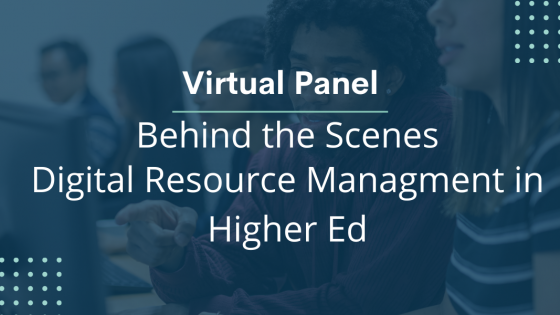This summer, Kivuto hosted a panel discussion on digital resource management education (Behind the Scenes: Digital Resource Management in Higher Ed). Representatives from Yale, Tufts, and Eastern Michigan University discussed the state of software licensing in higher education, the challenges their schools face on that front, and current trends in academic IT.
In our last blog post, we looked at the key challenges identified by the panel. This covered three areas in which academic IT teams are struggling, according to the participants in the webinar.
In this follow-up, we’ll take a look at three emerging trends that were touched on in the webinar. These are the issues that the panelists felt are bound to become priorities if they aren’t already and will have a major impact on shaping the future of academic IT.
Want More Than a Summary?
Watch the entire panel discussion for a more in-depth look at the world of academic IT and software licensing.
The Shift to the Cloud
We’ll start with what should be an obvious one to anyone keeping track of how software is licensed. More and more vendors are ditching the traditional perpetual licensing model and making the change to cloud licensing, or “software as a service (SaaS).”
This shift was reflected not only in the opinions of panelists but in polling of webinar attendees. When asked to identify the most common licensing model used at their institutions, 88% of attendees indicated that it was a mix of cloud and perpetual licensing. Considering how recently perpetual licensing was the industry standard, this marks a dramatic shift that’s still in progress. “A move toward cloud-based delivery – no more installer packages, no more locally installed copies – is definitely where the industry wants to go,” said Randy Rode, a panelist from Yale University.
That vendors are going through this transition at different paces and in different ways is what makes it so challenging, according to the panelists. Katherine Simonetti, another representative from Yale, stressed the need to be capable of distributing software under both models. She cited Minitab as an example of a vendor offering both desktop and cloud-based software.
The Death of the Computer Lab
Another trend related to the shift to the cloud is the diminishing role of computer labs at higher-ed institutions. “Since the pandemic, and before the pandemic, students don’t want to come into labs,” said Dianne Silva from Tufts University.
Many panelists noted that the COVID-19 pandemic played a role in hastening the demise of computer labs. However, others pointed out that the decline started well before the pandemic and can also be attributed to the emergence of numerous alternatives to installing software on lab computers. “It could be delivery of home-use software,” said Arik Kirkland. “It could be cloud-based virtual desktops.”
Whatever the reason, all panelists agreed that the relevance of campus computer labs is fading fast. Rode said that after years of predictions that these labs would become obsolete, “We’re finally getting to the point where we’re seeing some computer labs close permanently.” Kirkland’s assessment of the state of the campus computer lab was more blunt. “It’s dying a slow death.”
Hybrid Learning
When the COVID-19 pandemic shut down in-person learning, schools were forced to transition to online education. In the beginning, this was seen as a purely temporary measure. However, in the opinions of the panelists Kivuto assembled, online education is here to stay in higher education.
This is not to say that post-secondary education will become a purely online experience. Rather, the panelists foresee a mix of in-person and online learning as the new norm for college and university students. “I don’t see that ever going away,” said Silva, referring to the online education options that proliferated during the pandemic. “I think we’ll always have a mix.”
As with the demise of computer labs, some panelists pointed out that this new hybrid online/in-person learning model is the product of more than just the pandemic. COVID certainly accelerated this model’s emergence, but its staying power can be attributed to a fundamental change in how students expect to consume content. “They’re used to getting their media and entertainment when they want it, how they want it,” said Kirkland. “I think it’s reasonable to expect they’d want their learning experience to match that.”
* * *
These three industry trends were identified by panelists in the 2022 webinar Behind the Scenes: Digital Resource Management in Higher Ed. For more information, you can check out the full webinar or read our blog post on the top challenges identified by the panel.
More From One of Our Panelists
Aric Kirkland from EMU leveraged Kivuto’s platform to start distributing home-use licenses to students at his institution. Read our case study to find out how.













